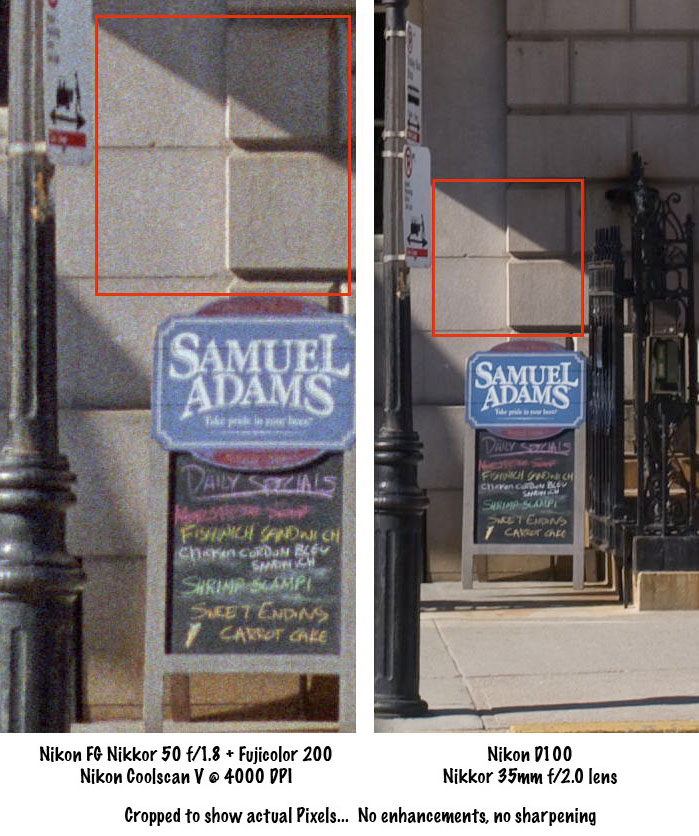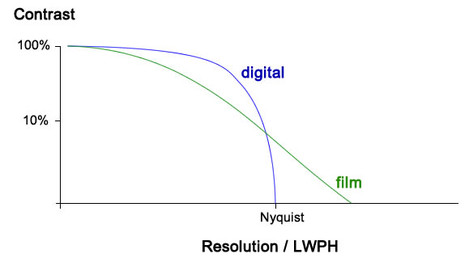ColSebastianMoran
( IRL Richard Karash )
Just discovered this great exposition by Rich from a couple years ago.
@giganova, thanks for the fabulous entry today. I love real world comparisons.
Just a small nit: The camera algorithms and/or/ the RAW conversion have done some manipulation of the image. So it's not completely unprocessed.
A more substantive comment:
- Digital responds to increasing spatial frequency quite flat until it falls apart completely. That is, digital maintains higher contrast until it dies.
- Film gradually loses contrast as spatial frequency increases. Thereby, film can maintain some contrast in very detailed areas, where digital lost it completely.
My own experiments:
- Shooting digital vs. Fuji 200 C-41 film. Scanned Coolscan V, 4000 ppi.
- 6 MPx digital was comparable to film, cleaner image, not quite same resolution
- Today, 24MPx digital is way better than I can get in 35mm film
Here's my comparison, 100% actual pixels:

@giganova, thanks for the fabulous entry today. I love real world comparisons.
I then converted the 24 Mpix digital image to monochrome for comparison with the FP4 b/w film. Otherwise, the picture is completely untouched and I made no changes in Photoshop.
Just a small nit: The camera algorithms and/or/ the RAW conversion have done some manipulation of the image. So it's not completely unprocessed.
A more substantive comment:
- Digital responds to increasing spatial frequency quite flat until it falls apart completely. That is, digital maintains higher contrast until it dies.
- Film gradually loses contrast as spatial frequency increases. Thereby, film can maintain some contrast in very detailed areas, where digital lost it completely.
My own experiments:
- Shooting digital vs. Fuji 200 C-41 film. Scanned Coolscan V, 4000 ppi.
- 6 MPx digital was comparable to film, cleaner image, not quite same resolution
- Today, 24MPx digital is way better than I can get in 35mm film
Here's my comparison, 100% actual pixels:



